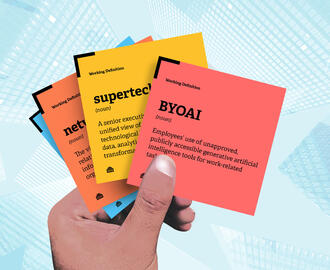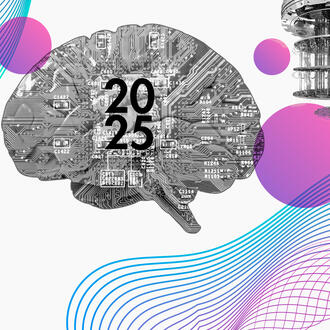Credit: Have a nice day photo
The heavily regulated health care space has historically been slow to adopt new technologies, but artificial intelligence is finally making inroads in clinical settings. The technology is now being used to help determine whether a colonoscopy result is malignant or benign, address fertility issues, and transcribe doctors’ notes on the fly, for instance.
“Every year, AI tools are getting more and more commonly used,” said Regina Barzilay, a distinguished professor for AI and health in the MIT School of Engineering.
Barzilay and Harvard law professor I. Glenn Cohen are part of a team that will be teaching the upcoming MIT Sloan Executive Education course “Transforming Healthcare With AI,” which addresses regulation, what to watch for when introducing AI, and how to evaluate AI’s effectiveness in a health care setting.
In a recent webinar, Barzilay said it’s an exciting time to be in medicine. “Today we know that AI tools can make predictions that the human mind cannot. Sometimes a machine can look at the images and the genetic data and make predictions that no doctor or no human expert would be able to make,” she said.
As AI continues to permeate health care, hospitals and medical professionals will need to make technology decisions that will impact the future of their organizations. How much automation to implement “will depend on the needs of your organization and the goals [of] how you’re planning to utilize AI,” Barzilay said.
“We are still not, unfortunately, at the point that we can apply AI blindly across the whole pipeline,” she said. “One of the goals of the course is to look at different scenarios and look at all different ways AI impacts patient outcomes, safety, efficacy, and cost. If we are careful, we can pair problems with technologies that are currently available.”
Here are three ways AI is helping to empower clinicians now.
1. Reading images more accurately than humans
AI can be used to give an all clear more confidently than humans can and eliminate unnecessary medical treatment. And it can raise the alarm earlier when further treatment is needed.
For example, AI can “very accurately” identify patients who are highly likely to develop breast or lung cancer in the near future, Barzilay said. That’s because AI often does a better job of spotting disease activity on a scan than people, who can only spot abnormalities that are large enough to be seen by the human eye. When disease activity is less noticeable, “AI clearly is doing better than the humans,” Barzilay said.
Detecting disease earlier gives practitioners a wider range of options in treating patients. It also allows clinicians to identify the small subset of the population that needs follow-up care while letting 95% of healthy people forgo unnecessary screenings, said Barzilay, who added that the cost savings across the system can be substantial.
2. Eliminating the hassle of note-taking
Doctors who use AI to take notes are able to focus more on patient care.
“We know that it takes a lot of time for clinicians to do documentation — they don’t like it,” Barzilay said. “Significant literature shows it contributes to clinician burnout.”
She said that the technology in natural language and speech recognition has improved enough that it now has the capacity to transcribe notes almost perfectly. From there, she said, all a doctor needs to do is review and sign off on the transcription, “which takes much less time than writing and recording everything.”
“Even if there are some mistakes, we can tolerate them because, at the end, the clinician needs to review it and sign,” Barzilay said.
3. Providing guidance tailored to individual patients
Related Articles
Barzilay said that AI can take a patient’s medical history and biological data and synthesize the information to predict the side effects of taking a drug. AI is good at things like suggesting, “For this patient, we should really look out for these side effects,” she said.
Barzilay likened the process to online shopping, where companies can “propose to me some things that are very, very specific to me based on what I bought in the past, what I didn't buy in the past, what I looked at, and so on.”
In addition, Barzilay said that AI can be helpful in predicting the trajectory of a disease in individual patients. It can “very well recommend to us what's going to happen, how your trajectory is likely to evolve,” she said.
AI is also being used in nonclinical settings. Oncology researchers, for example, are using molecular modeling to better understand disease mutation and to design more effective drug-based treatments. “That’s where AI is currently leading the way on the frontier of the science,” Barzilay said.
She cautioned, however, that physicians should stay skeptical of AI, not over-rely on it, and not “degenerate in their capacity” to make sound clinical decisions.
“You still need to keep your heart as a human and know what to watch for,” Barzilay said.
Executive Education: Transforming Healthcare with AI



